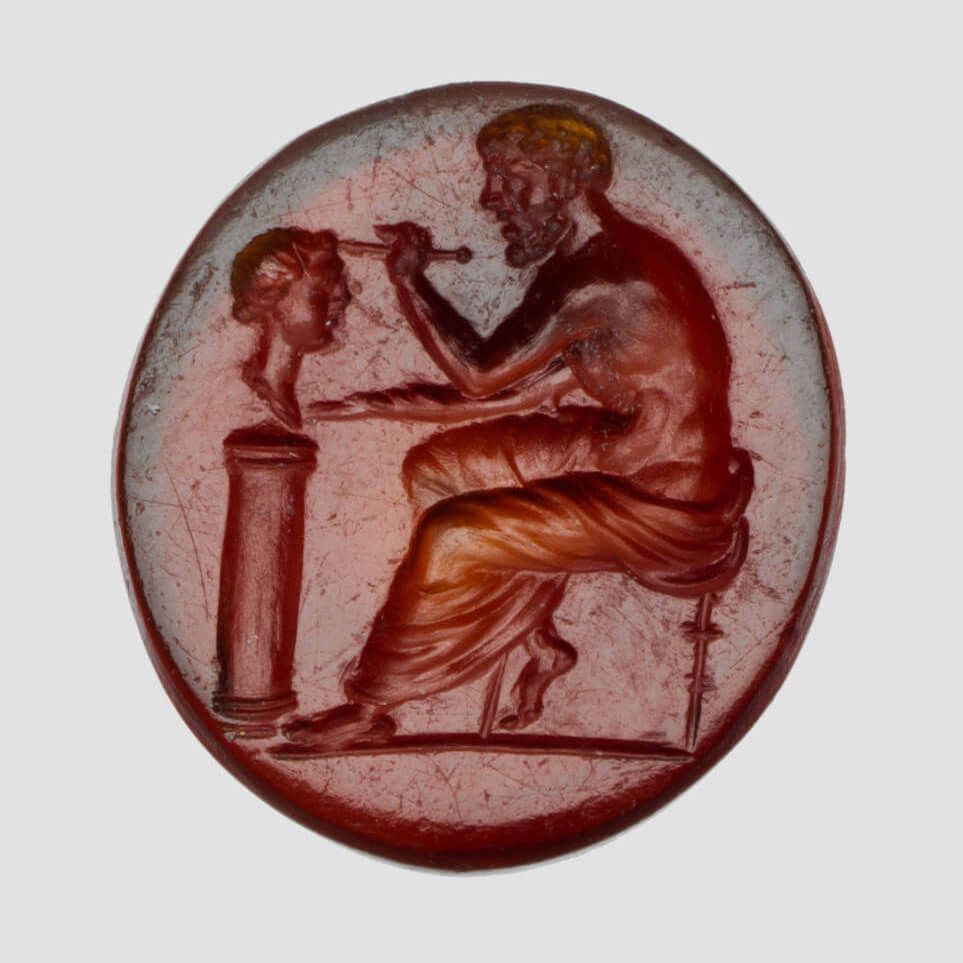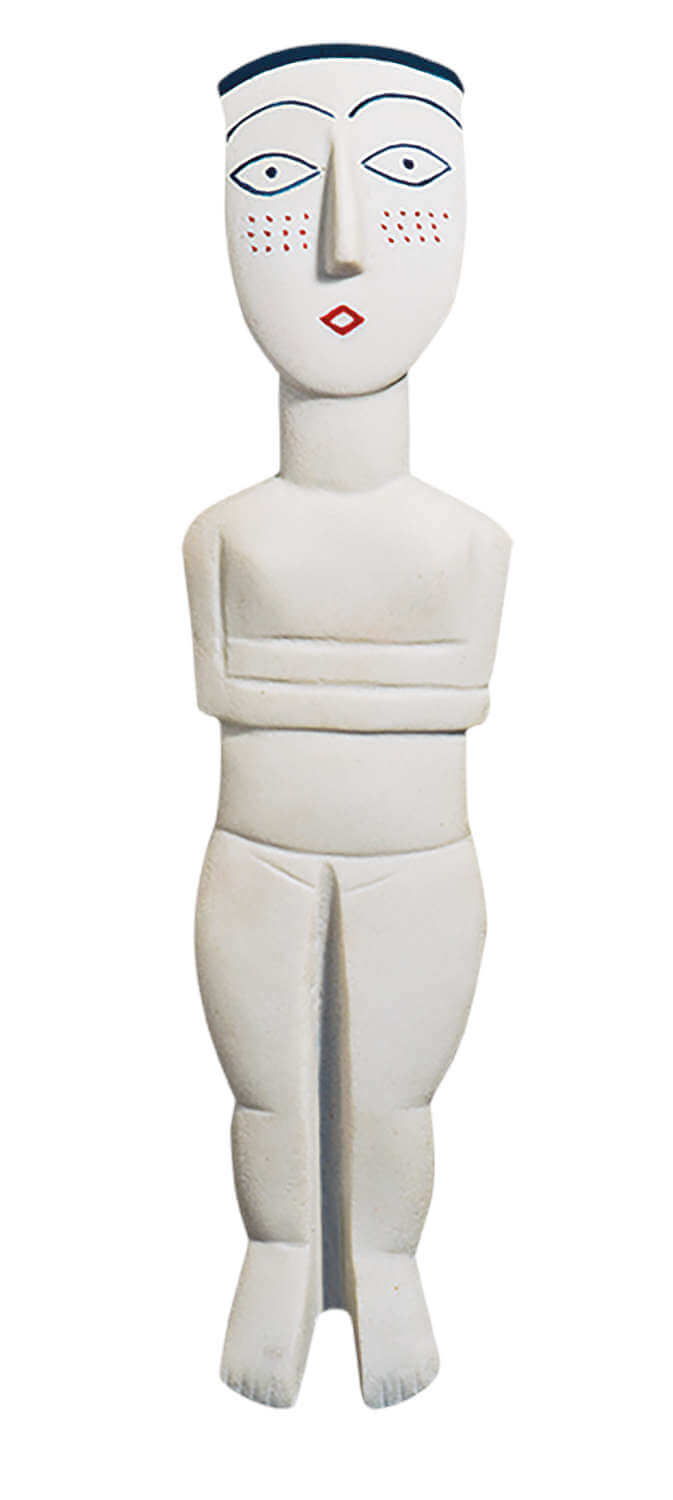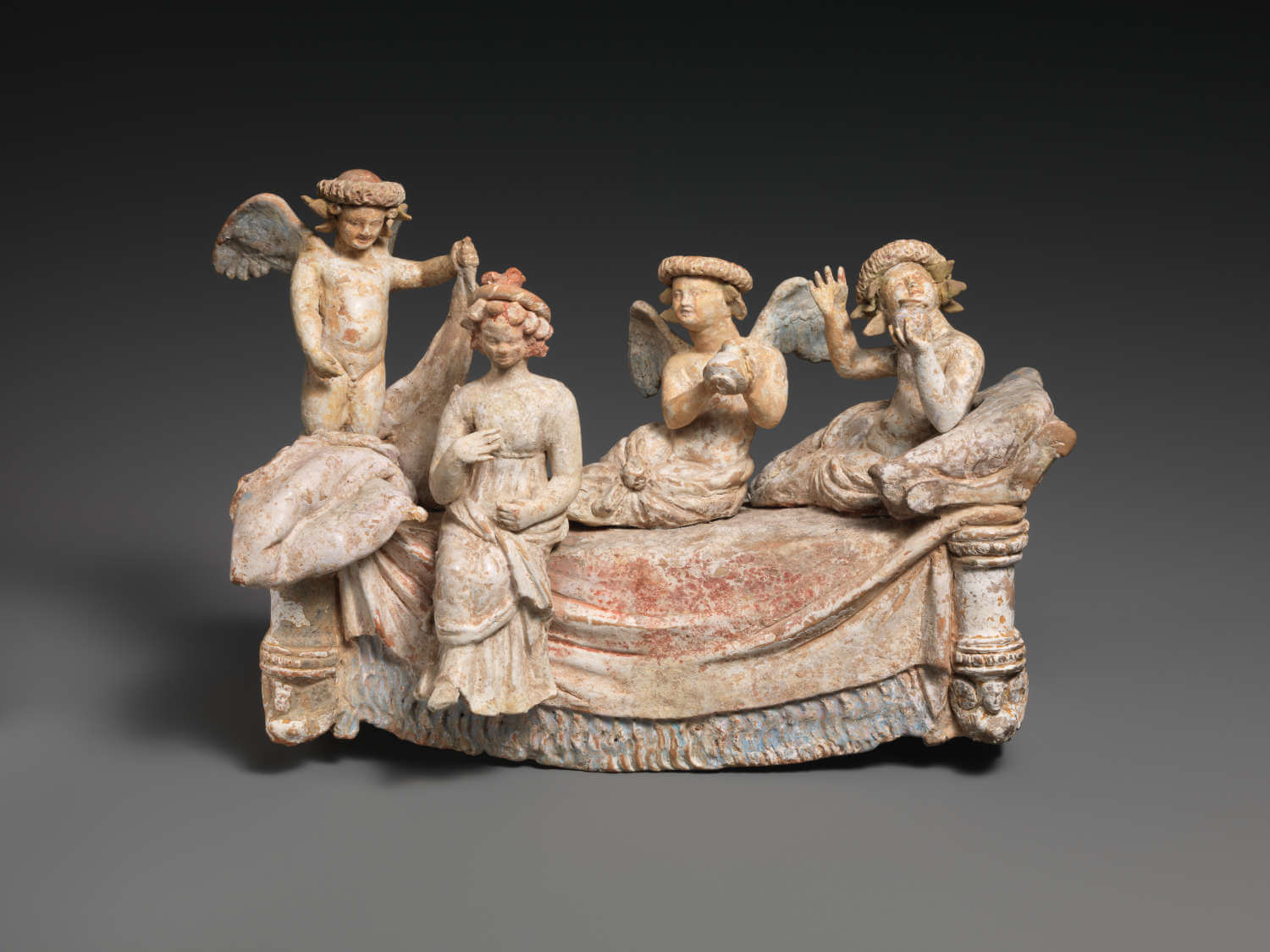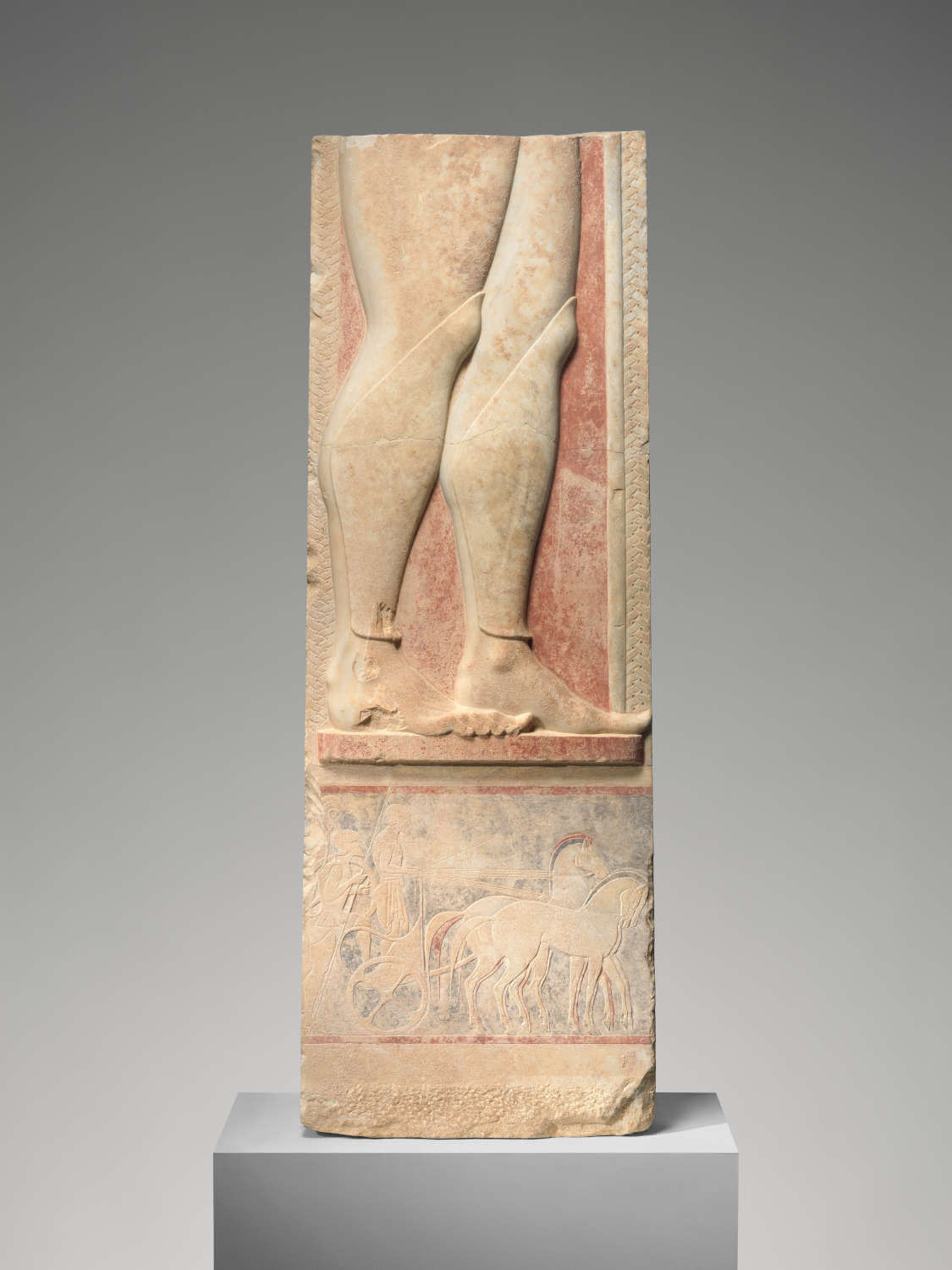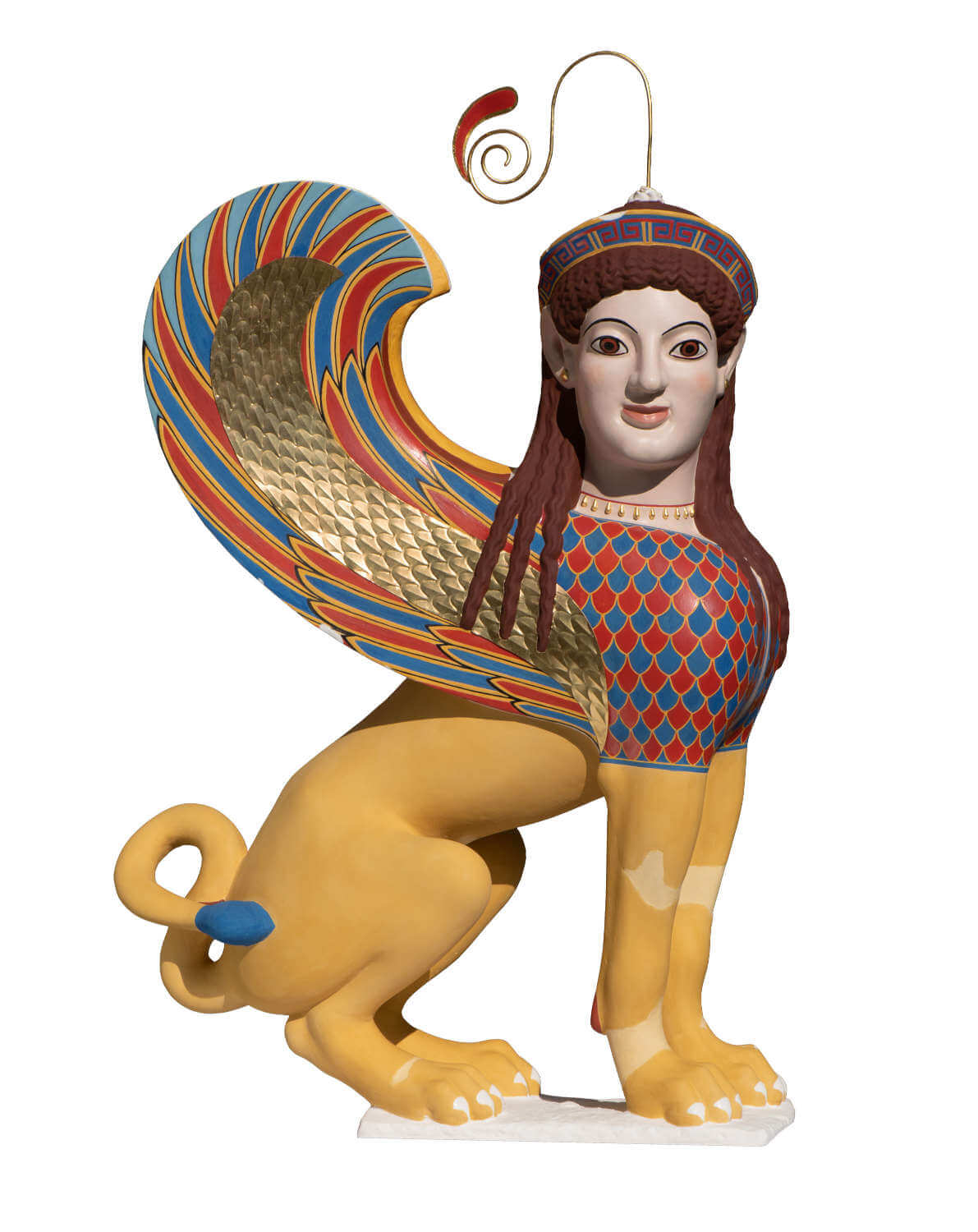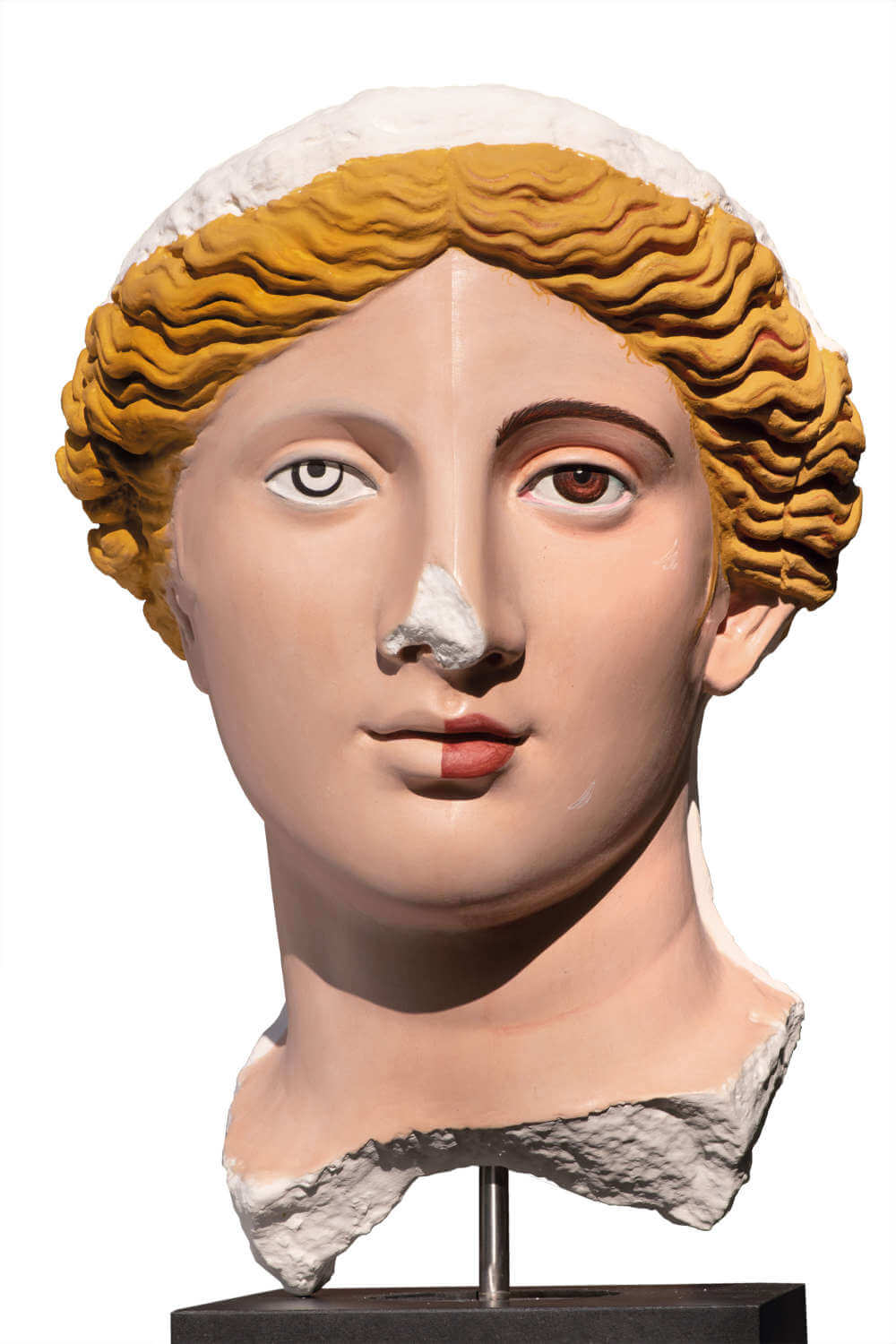
Ancient Greek and Roman sculpture was once colorful, vibrantly painted, and richly adorned with detailed ornamentation. Opened at The Metropolitan Museum of Art on July 5, 2022, Chroma: Ancient Sculpture in Color reveals the colorful backstory of polychromy – meaning “many colors” in Greek – and presents new discoveries of surviving ancient color on artworks in The Met’s world-class collection. Exploring the artistic practices and materials used in ancient polychromy, the exhibition highlights cutting-edge scientific methods used to identify ancient color and examines how color helped convey meaning in antiquity, and how ancient polychromy has been viewed and understood in later periods. The exhibition is made possible by the Aretê Foundation/Betsy and Ed Cohen. Additional support is provided by Mary Jaharis and Cathrin M. Stickney and Mark P. Gorenberg. This exhibition is organized by The Metropolitan Museum of Art, New York City, in collaboration with the Liebieghaus Sculpture Collection, Frankfurt am Main.
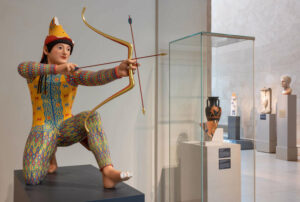
Max Hollein, Marina Kellen French Director of The Met, said, “This innovative exhibition will activate The Met’s displays of ancient Greek and Roman art like never before by displaying colorful reconstructions of ancient sculptures throughout the galleries. It is truly an exhibition that brings history to life through rigorous research and scientific investigation, and presents new information about works that have long been in The Met collection.”
Exhibition Overview
The exhibition features a series of reconstructions of ancient sculptures in color by Prof. Dr. V. Brinkmann, Head of the Department of Antiquity at the Liebieghaus Sculpture Collection, and Dr. U. Koch-Brinkmann, and introduces a new reconstruction of The Met’s Archaic-period Sphinx finial, created by The Liebieghaus team in collaboration with The Met. Presented alongside original Greek and Roman works representing similar subjects, the reconstructions are the result of a wide array of analytical investigations, including 3D imaging, and art historical research. Polychromy is a significant area of study for The Met, and the Museum has a long history of investigating, preserving, and presenting manifestations of original color on ancient statuary.
Displayed throughout the Museum’s Greek and Roman galleries, the exhibition explores four main themes: the discovery and identification of color and other surface treatments on ancient works of art; the reconstruction and interpretation of polychromy on ancient Greek and Roman sculpture; the role of polychromy in conveying meaning within Greek and Roman contexts; and the reception of polychromy in later periods.
Chroma emphasizes the extensive presence and role of polychromy in ancient Mediterranean sculpture, both broadly and across media, geographies, and time periods, from Cycladic idols of the third millennium B.C. to Imperial Roman portraiture of the second century, as witnessed throughout the Museum’s collection and illustrated with 40 artworks in the permanent galleries on the first floor of the Museum. Fourteen reconstructions of Greek and Roman sculpture by Dr. Brinkmann and his team highlight advanced scientific techniques used to identify original surface treatments. These full-size physical reconstructions will be juxtaposed with comparable original works of art throughout The Met’s Greek and Roman Art Galleries, provoking visitors to rethink how the Greek and Roman sculptures originally looked in antiquity.
The Greek and Roman special exhibition gallery on the mezzanine level (Gallery 172) functions as a hub for Chroma where the exhibition themes are addressed in more depth and three additional reconstructions by The Brinkmann team are brought together with 22 works of art from The Met’s collection. The works include an early watercolor reconstruction of polychromy on Greek architectural sculpture from the Athenian Acropolis; ancient Greek terracotta vases with scenes portraying polychrome sculpture and artisans painting sculpture; and works of art from ancient Egypt to the Italian Renaissance and 19th-century America, which expand the cultural and chronological purview of the exhibition and underscore the artistic and historic significance of Greek and Roman polychromy as perceived and expressed beyond antiquity.
The new reconstruction of The Met’s Archaic-period Sphinx finial – which once crowned a grave stele in the Museum’s collection – was created specifically for the exhibition by Dr. Brinkmann and his team in collaboration with The Met’s Departments of Greek and Roman Art, Objects Conservation, Scientific Research, and Imaging. 3D digital renditions of both the original work and the reconstruction were also produced and will be used to experience the sphinx’s polychromy through Augmented Reality.
The Augmented Reality (AR) experience, Chroma AR, will allow smartphone users to virtually recreate the sphinx, seeing it as a full-color reconstruction as well as how it exists at The Met. A range of additional features, including a three-dimensional scavenger hunt and a social media-like “face filter” mode, let visitors playfully explore how The Met and its collaborators use science, technology, and art history to determine the original appearance of these ancient sculptures. Chroma AR was created in partnership with Bluecadet, an experience design firm. It launched on July 5, 2022 and is available for the year-long duration of the exhibition.
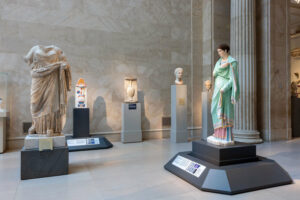
Chroma: Ancient Sculpture in Color is curated by the Department of Greek and Roman Art’s Seán Hemingway, John A. and Carole O. Moran Curator in Charge, and Sarah Lepinski, Associate Curator, together with Vinzenz Brinkmann, Head of the Department of Antiquity at the Liebieghaus Sculpture Collection in Frankfurt. Technical and scientific work was conducted by The Met’s departments of Objects Conservation, Scientific Research, and Imaging in collaboration with the curators, including Lisa Pilosi, Sherman Fairchild Conservator in Charge, De Abramitis, Conservator, Department of Objects Conservation; Marco Leona, David H. Koch Scientist in Charge, Federico Carò, Research Scientist and Elena Basso, Associate Research Scientist, Department of Scientific Research; Scott Geffert, General Manager, Imaging and Jesse Ng, Imaging Specialist, and the Imaging Department team.
In conjunction with the exhibition, a two-day symposium will be held at The Met in March 2023, assembling an international group of scholars and including Met curators, conservators, and scientists, to discuss a wide range of subjects related to the polychromy of ancient sculpture. Proceedings of the symposium will be published by The Met. The symposium and the accompanying publication are made possible by Mary Jaharis.
The exhibition is featured on the Museum’s website.
In 2019 the Kelsey Museum took a closer look at color in the Roman world.
Once you’ve learned more about the use of color in Ancient Rome, why don’t you check out our podcasts to learn more about the topic of money in Ancient Rome?



